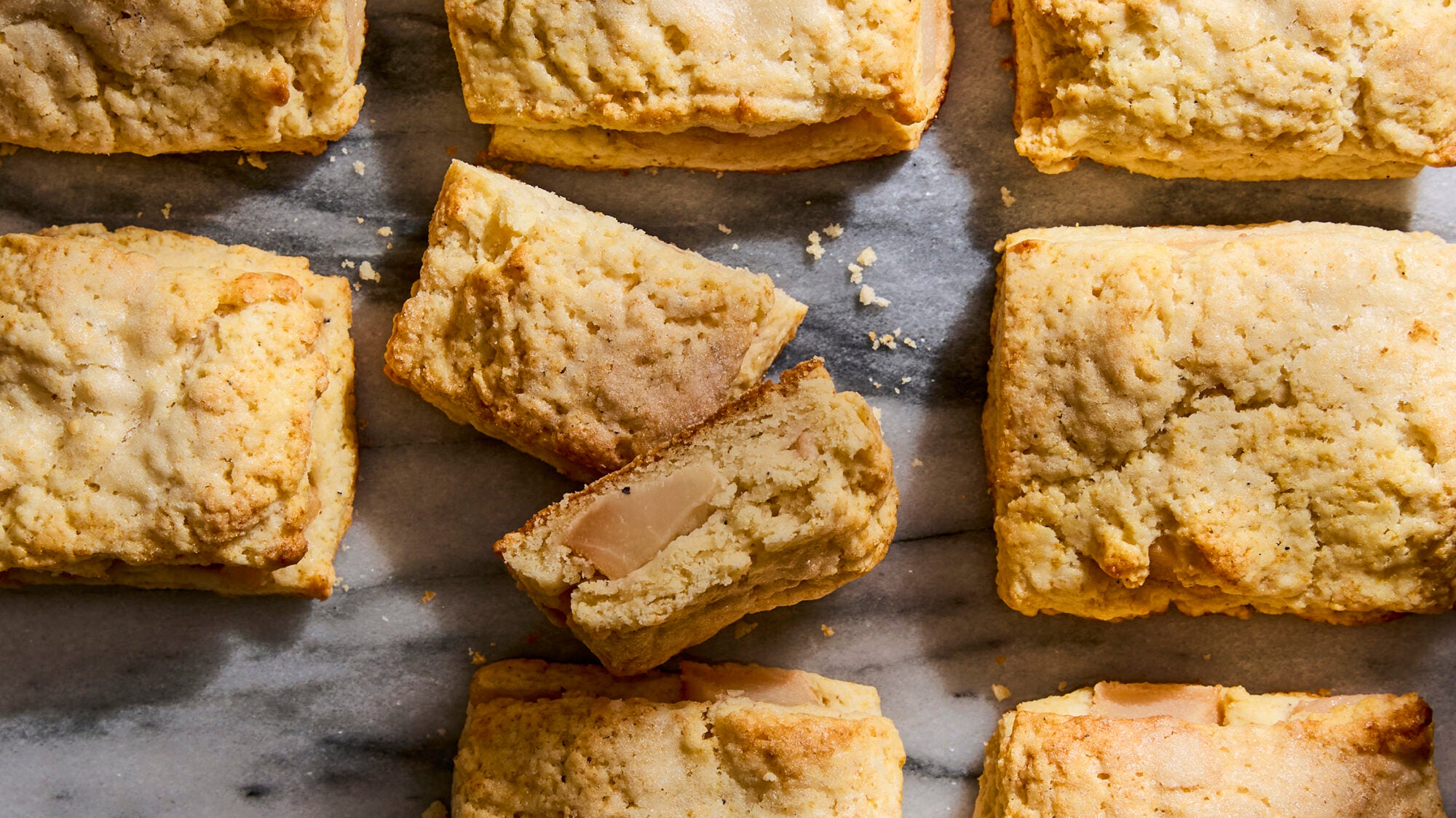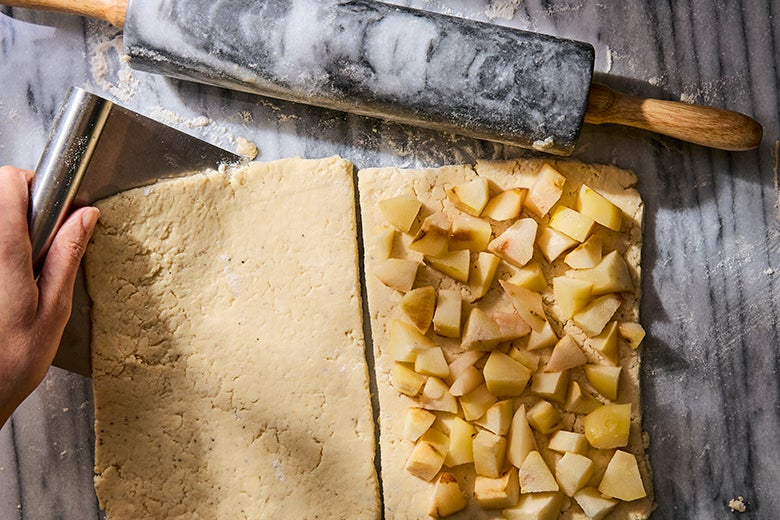
A tender, buttery, cardamom-scented pick-me-up
For two years, I worked in a French-style bakery that specialized in laminated pastries. It may be hard to believe, but with unfettered access, I soon grew sick of eating the buttery croissants and Danishes. It was during this time, however, that I discovered a passionate and enduring love of scones. Each morning, I would sit among the dry storage containers and munch on one of our seasonal cream scones while sipping a cup of milky black tea—a small moment of joy in an otherwise brutal early morning shift. Though my bakery days are long behind me, my fondness for scones is unchanged. I make at least one batch a month and fold in whatever seasonal fruit I have on hand. For November, I’ve opted for juicy Bartlett pears scented with a whisper of peppery ground cardamom.
There are two types of fruit scones: ones with fruit dotted throughout and ones with a layer of fruit in the center—like a sandwich. These scones are of the latter sort, with soft, roasted pears forming a uniform, almost buttery-textured layer in the center. To avoid sogginess, it’s important to roast the cubed pears in the oven first until they’re tender and just dry to the touch— a trick I picked up from Deb Perelman’s Roasted Pear and Chocolate Chunk Scones recipe. Because the pears are pre-cooked, you can even get away with using slightly underripe fruit; the heat of the oven will soften and sweeten the flesh of pears that would be a bit too crunchy for casual snacking.

A great scone is tender and crumbly, but not dry, and there are a few secrets to nailing this ideal texture. Firstly, you want to use plenty of fat, both butter and heavy cream, which helps to minimize the formation of gluten and prevents a tough or chewy bite. It’s also important to keep these dairy ingredients cold, since the act of rubbing the chilled butter into the dry ingredients creates the signature “short” and crumbly texture. Finally, avoid overmixing the dough once the cream has been added; a gentle touch will make for the tenderest results.
Once the dough has been mixed, it’s rolled out into two equally sized rectangles. The cooled pear pieces are scattered over one of them, then the second rectangle of dough is placed on top, sandwiching the fruit within. Next, the top of the dough is brushed with a thin layer of cream, then sprinkled generously with sugar for a golden, sparkly (and slightly crunchy) finish.
Whether I’m enjoying these scones as part of a light breakfast or an afternoon treat, I always serve mine alongside tea or coffee. If you don’t plan to serve the whole batch in one sitting, freeze the rest fully baked for another day. There are at least two bags of frozen scones in my freezer right now. What can I say? You can take the girl out of the bakery, but you can’t take the bakery out of the girl.